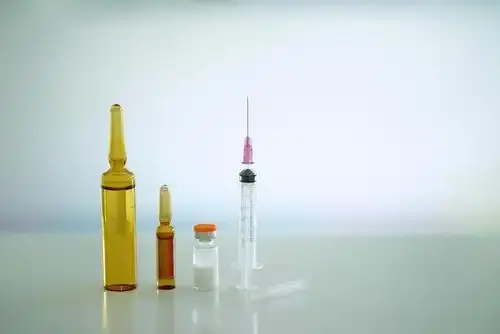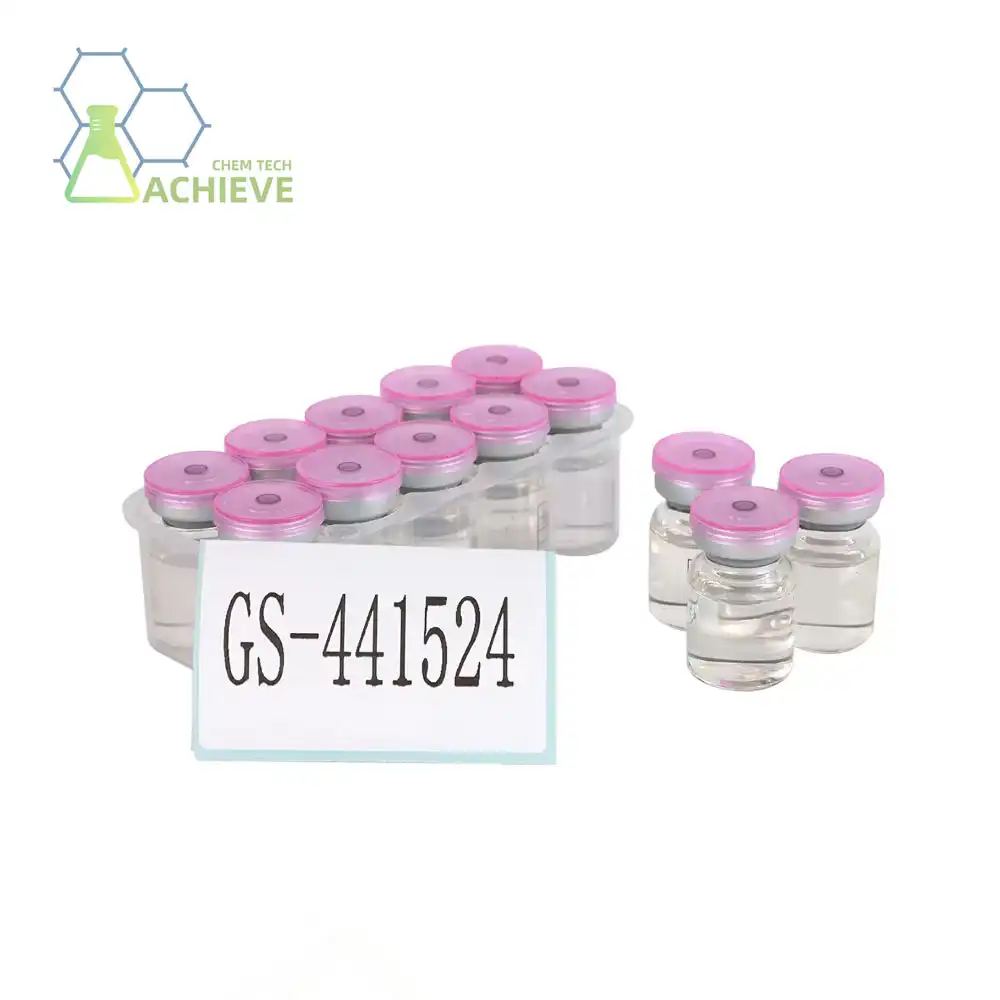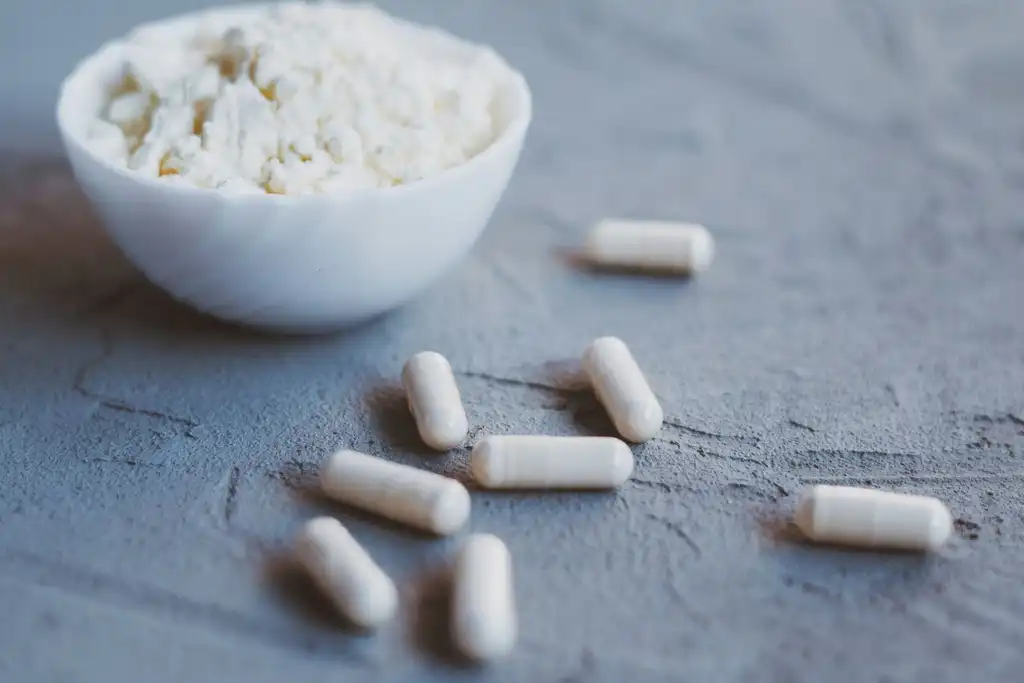Does GS 441524 injection cause pain at the injection site?
GS 441524 has emerged as a promising treatment for certain viral infections in animals, particularly feline infectious peritonitis (FIP) in cats. As with any injectable medication, concerns about pain and discomfort at the injection site are common among pet owners and veterinarians. This article delves into the potential for pain associated with GS 441524 injections, explores methods to minimize discomfort, and discusses best practices for administration.
Product: https://www.bloomtechz.com/oem-odm/injection/gs-441524-injection.html
 |
 |
 |
How to Reduce Discomfort from GS 441524 Injections?
While GS 441524 treatment can be life-saving for cats with FIP, the injection process may cause some discomfort. Here are some strategies to help minimize pain and stress during administration:
Proper Injection Technique
The technique used to administer the injection plays a crucial role in minimizing pain. Here are some key points to consider:
- Use the appropriate needle size (typically 25-27 gauge)
- Inject slowly and steadily
- Rotate injection sites to prevent irritation
- Ensure proper storage and handling of the medication
Pre-injection Preparation
Taking steps to prepare both the injection site and the cat can help reduce anxiety and discomfort:
- Warm the medication to room temperature before injection
- Gently massage the injection site before and after administration
- Consider using a topical numbing cream (consult with your veterinarian first)
- Create a calm environment for the injection process
Post-injection Care
After administering the GS 441524 drug, proper care can help alleviate any lingering discomfort:
- Apply a cold compress to the injection site to reduce swelling
- Monitor the site for signs of irritation or infection
- Provide gentle petting or treats as positive reinforcement
- Allow the cat to rest in a quiet, comfortable space
 |
 |
 |
Managing Injection Site Reactions: GS 441524 Best Practices
While efforts to minimize discomfort are important, it's equally crucial to be prepared for potential injection site reactions and know how to manage them effectively.
Common Injection Site Reactions
Some cats may experience mild to moderate reactions at the injection site, including:
- Redness or swelling
- Mild bruising
- Temporary hair loss
- Localized warmth
These reactions are typically temporary and resolve on their own within a few days. However, it's important to monitor the injection site closely and report any severe or persistent reactions to your veterinarian.
Strategies for Managing Reactions
To help alleviate discomfort and promote healing of injection site reactions:
- Apply a warm compress to the area for 5-10 minutes, 2-3 times daily
- Gently massage the area to promote circulation and reduce swelling
- Keep the injection site clean and dry
- Consider using a pet-safe, anti-inflammatory cream (with veterinary approval)
When to Seek Veterinary Care
While most injection site reactions are mild, certain symptoms warrant immediate veterinary attention:
- Excessive swelling or redness that persists or worsens
- Signs of infection, such as discharge or a foul odor
- Visible abscess formation
- Significant behavioral changes or signs of severe pain
GS 441524 Pain Factors: Solvents, Needle Size & Administration
Understanding the factors that contribute to injection-related discomfort can help in developing strategies to minimize pain during GS 441524 treatment.
Solvent Composition
The solvent used to dissolve GS 441524 can impact the level of discomfort experienced during injection. Factors to consider include:
- pH level of the solution
- Osmolality and tonicity
- Presence of preservatives or additives
Working with a compounding pharmacy or veterinarian to optimize the solvent composition may help reduce injection-related pain.
Needle Size and Injection Volume
The size of the needle and the volume of medication injected can significantly affect the level of discomfort experienced. Consider these points:
- Smaller gauge needles (higher number) generally cause less pain
- Larger injection volumes may increase discomfort
- The injection site's capacity to accommodate the volume of medication
Your veterinarian can help determine the optimal needle size and injection volume based on your cat's specific needs and the concentration of the GS 441524 solution.
 |
 |
 |
Administration Technique
The method used to administer the injection can significantly impact the level of discomfort experienced. Key considerations include:
- Injection speed (slower is generally better)
- Proper angle of needle insertion
- Consistency in technique across multiple injections
- Experience level of the person administering the injection
Proper training and practice can help improve administration technique and reduce pain associated with GS 441524 injections.
Environmental Factors
The environment in which the injection is administered can affect the cat's stress levels and perception of pain. Consider the following:
- Choose a quiet, familiar location for injections
- Minimize restraint and handle the cat gently
- Use pheromone sprays or diffusers to create a calming atmosphere
- Maintain a consistent routine for injection times
Individual Cat Factors
Each cat may respond differently to GS 441524 injections based on various individual factors:
- Age and overall health status
- Previous experiences with injections or veterinary procedures
- Pain tolerance and sensitivity
- Body condition and muscle mass at injection sites
Tailoring the injection protocol to each cat's specific needs and responses can help minimize discomfort and improve treatment compliance.
Concurrent Medications
Some cats undergoing GS 441524 treatment may be receiving other medications that could impact pain perception or injection site reactions. Consider:
- Potential interactions between GS 441524 and other drugs
- Use of pain medications or anti-inflammatories
- Impact of immunosuppressive drugs on injection site healing
Consult with your veterinarian about any concurrent medications and their potential effects on the injection process.
Long-term Management Strategies
For cats requiring extended courses of GS 441524 treatment, developing long-term management strategies is crucial:
- Regularly reassess injection sites and rotate as needed
- Monitor for changes in the cat's response to injections over time
- Consider adjusting the treatment protocol if persistent issues arise
- Explore alternative administration methods if available and appropriate
Ongoing communication with your veterinarian is essential for optimizing the treatment approach and minimizing discomfort throughout the course of therapy.
Psychological Aspects of Pain Management
The psychological component of pain perception should not be overlooked in managing GS 441524 injections:
- Use positive reinforcement techniques before, during, and after injections
- Consider desensitization and counterconditioning strategies
- Be aware of your own stress levels and their impact on the cat
- Explore calming aids such as pheromone products or anxiety-reducing supplements
Addressing the psychological aspects of the injection process can help reduce stress and improve the overall experience for both the cat and the caregiver.
Monitoring and Documentation
Keeping detailed records of each injection can provide valuable insights for pain management:
- Document injection sites, volumes, and any observed reactions
- Track changes in the cat's behavior or response to injections over time
- Note any modifications to the injection protocol and their effects
- Share this information with your veterinarian to inform ongoing treatment decisions
Consistent monitoring and documentation can help identify patterns and optimize the injection process for minimal discomfort.
In conclusion, while GS 441524 injections may cause some discomfort, there are numerous strategies available to minimize pain and manage injection site reactions effectively. By employing proper techniques, being attentive to individual cat needs, and working closely with your veterinarian, it's possible to make the treatment process as comfortable as possible for cats undergoing this potentially life-saving therapy.
For pharmaceutical companies and research institutions seeking high-quality chemical products for drug development and manufacturing, Shaanxi BLOOM TECH Co., Ltd. offers a comprehensive range of services. With our state-of-the-art GMP-certified production facilities spanning 100,000 square meters and expertise in advanced reaction and purification techniques, we are well-equipped to meet the diverse needs of the pharmaceutical industry. Whether you require bulk chemicals for long-term contracts or specialized compounds for research purposes, our team is ready to assist you. To learn more about our chemical products and how we can support your pharmaceutical endeavors, please contact us at Sales@bloomtechz.com.
References
- Pedersen, N. C., et al. (2019). Efficacy and safety of the nucleoside analog GS-441524 for treatment of cats with naturally occurring feline infectious peritonitis. Journal of Feline Medicine and Surgery, 21(4), 271-281.
- Murphy, B. G., et al. (2020). Treatment of cats with feline infectious peritonitis with the nucleoside analog GS-441524. Animals, 10(6), 1056.
- Dickinson, P. J., et al. (2020). Antiviral treatment using the adenosine nucleoside analogue GS-441524 in cats with clinically diagnosed neurological feline infectious peritonitis. Journal of Veterinary Internal Medicine, 34(4), 1587-1593.
- Addie, D. D., et al. (2020). Feline infectious peritonitis. ABCD guidelines on prevention and management. Journal of Feline Medicine and Surgery, 22(11), 1047-1068.

Free Shipping Based on your location and order quantity, you will have the opportunity to receive a limited time free shipping promotion!

BLOOMTECHZ



